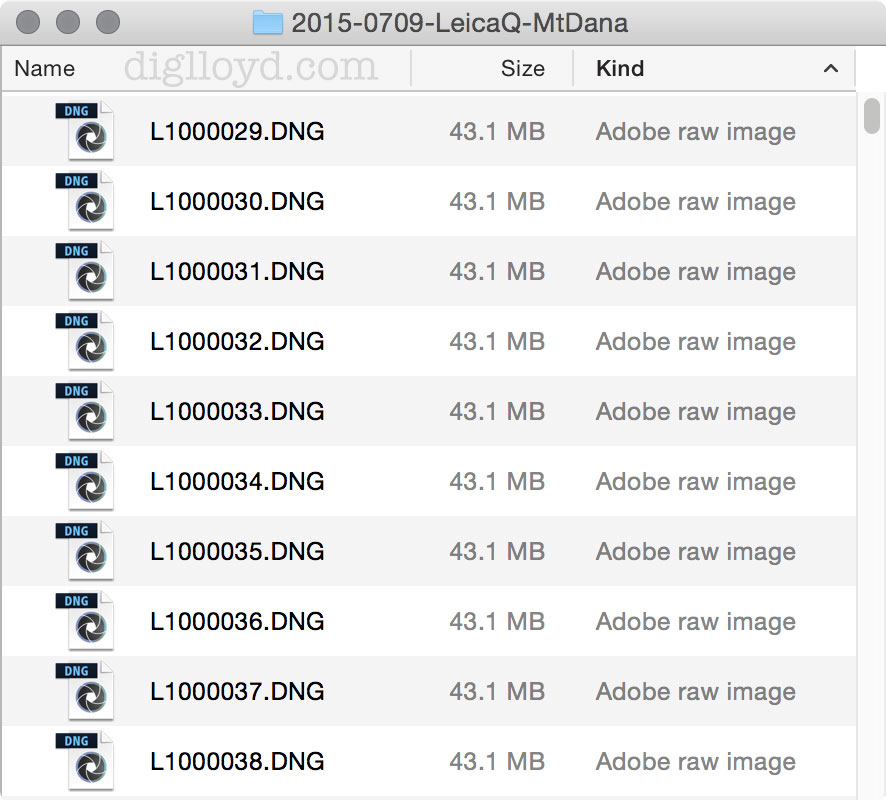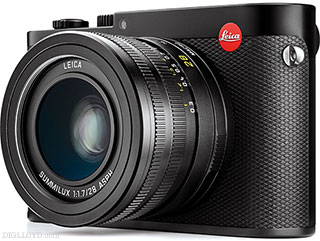EXCERPT page containing first few paragraphs. 2024-04-25 08:51:14
UA_SEARCH_BOT_compatible_botmozilla/5.0 applewebkit/537.36 (khtml, like gecko; compatible; claudebot/1.0; +claudebot@anthropic.com) @ 3.14.142.115
For full access, subscribe here. Or click title to login. ![]()
Leica Q Recording Format (DNG and JPEG)
There is no raw-only recording option; it’s either JPEG or DNG + JPEG.
For your author, this means having to delete the JPEGS with each and every download. Like the abominable self timer behavior, this crosses the line to design medocrity, a woeful lack of perspective at best. There is no technical or rational reason that a recording choice of DNG-only should be omitted.
If one’s standards for image detail are low, JPEG recording can be used. But the results cannot be compared to a properly processed DNG and scenes with high dynamic range are severely compromised with 8-bit JPEG (for later adjustment of dark areas).
As for DNG format, the Leica Q is needlessly wasteful, having no lossless compression* option, as well as wasting about 10% of the file size on pixels that are discarded by distortion correction. In mid-2015, there is no rational reason to omit a lossless-compresed file format**. The files shown below would likely average 25-30 MB each instead of a fixed 43.1. megabytes. The large size occupies more card space, takes longer to download and wastes computer storage space (for zero benefit). Lacking a fast camera card, the larger size means slower recording also, so use a fast card like the Lexar 2000X SDXC.
Article continues for subscribers...
Diglloyd Guide to Leica is by yearly subscription. Subscribe now for about 25 cents a day ($90/year).
BEST DEAL: get full access to ALL 8 PUBLICATIONS for about 75 cents a day!
Diglloyd Guide to LEICA contains in-depth coverage of Leica M system cameras and lenses, with additional coverage of Leica M Monochrom, Leica Q.
Special emphasis is placed on Leica M lenses and certain Zeiss ZM lenses.
- Make better images by learning how to get the best results right away.
- Save money by choosing the right lens for your needs the first time, particularly the Summilux/Summicron/Elmarit choice and/or Zeiss ZM.
- Make better images, a sort of “cheat sheet” saving yourself months or years of ad-hoc learning. Processing parameters are discussed and shown.
- Jaw-dropping image quality found nowhere else utilizing Retina-grade images up to full camera resolution, plus large crops [past 2 years or so].
- Real world examples with insights found nowhere else. Make sharper images just by understanding lens behavior you won’t read about elsewhere.
- Aperture series from wide open through stopped down, showing the full range of lens performance and bokeh.
- Optical quality analysis of field curvature, focus shift, sharpness, flare, distortion, and performance in the field.
Want a preview? Click on any page below to see an excerpt as well as extensive blog coverage, for example on Leica.



